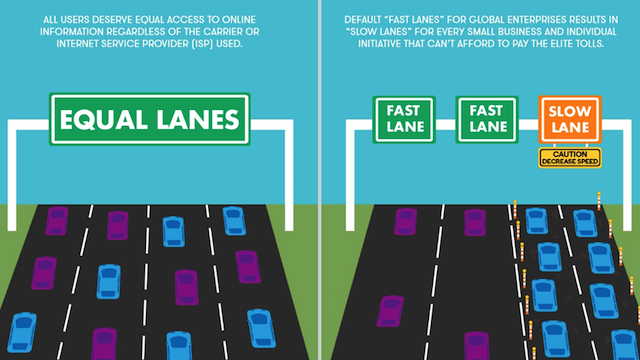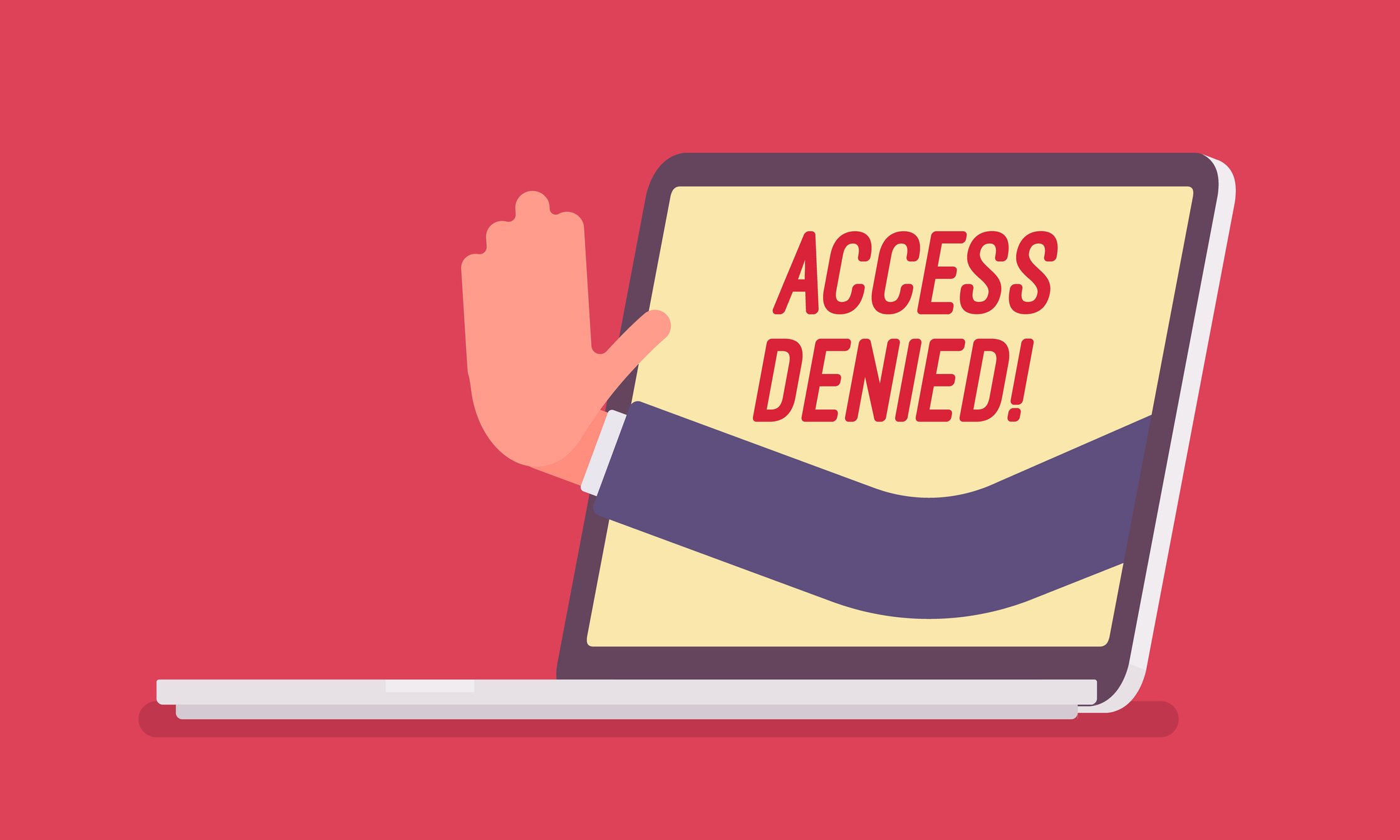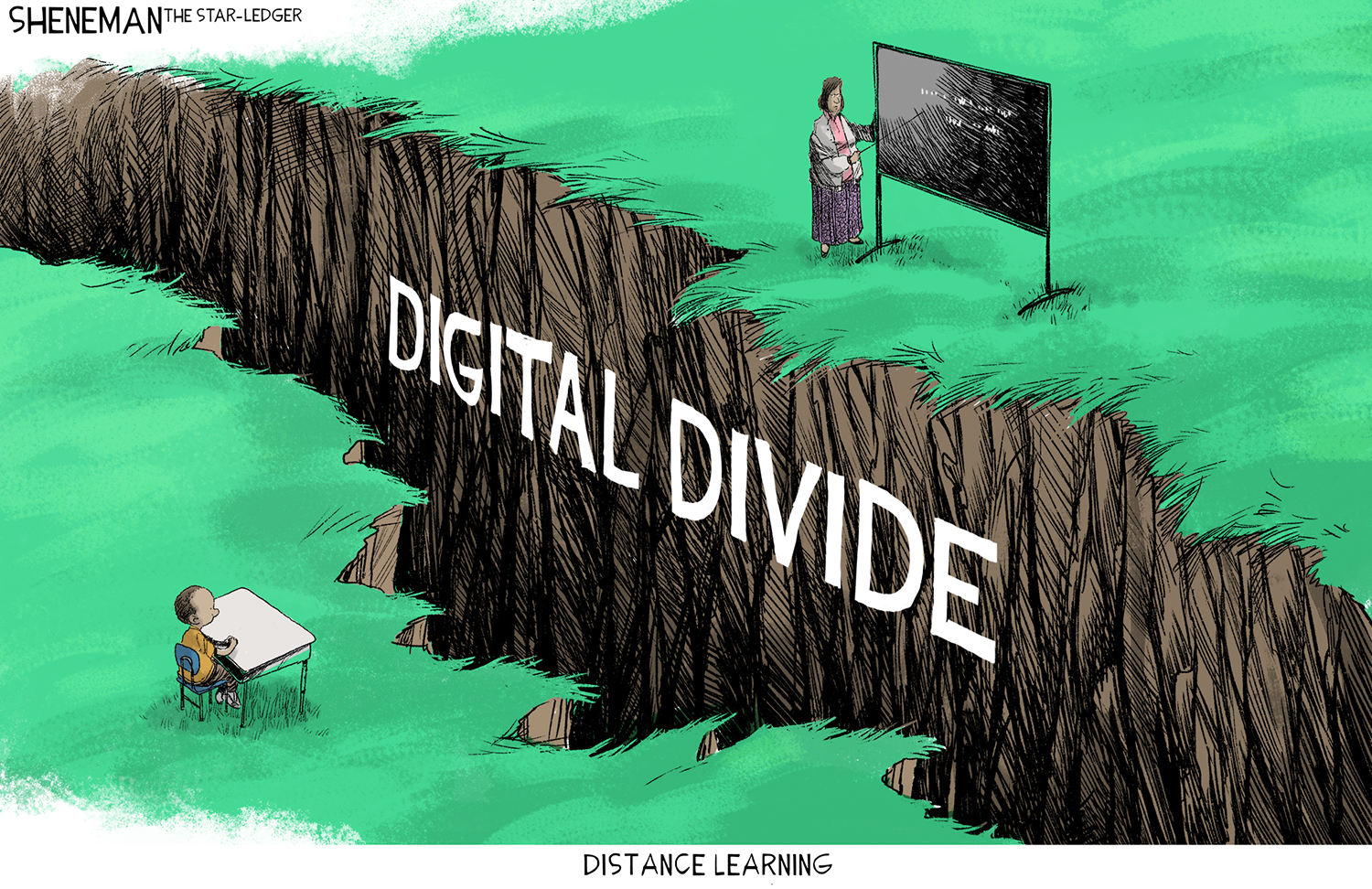Internet Project
Net Neutrality, Digital Divide, and Internet Censorship

Net Neutrality
The principle that internet providers shoud enable equal access to all content and applications
Net neutrality is the principle or ideal that the internet should be equal for everyone regardless of device, application, or platform. This includes service providers treating all data equally, not restricting access or slowing down speeds in their own interest. This also includes internet providers not making deals with companies to improve their network speed. While service providers have the right to manage their own network for maximum efficiency, they are prevented from managing service to gain profits. If they were to maximize efficiency and profits, it could potentially be detrimental to public interest and company participation. The debate of whether or not net neutrality should be determined by internet service providers or evenly regulated still continues, including the aspects of potential government control. Supporters of net neutrality argue for nondiscriminatory and equal internet, while the opposers believe that government involvement prevents economic growth. Net neutrality is often managed on a national or regional basis. This causes disagreements or contradictions on what should be allowed in certain areas. If the national or regional guidelines differ, than there is debate over what should and shouldn't be equal. For more on this topic, click the link below to learn the effects of net neutrality on society.

Internet Censorship
The censorship and restriction of what can be seen on the internet.
Internet Censorship deals with the regulation of online content. The main conflict regarding internet censorship is what certain global regions or even internet providers are allowed to restrict under their own legal systems. There are often times fears of what citizens will access on the internet due to legal reasons and restrictions. In the United States, despite most things being protected by the First Amendment there are exceptions to what needs to be prevented on the internet. Schools and companies also have control over what their employees or students can access based on their general workplace restrictions. This is something that the general principle of internet censorship, that anything can be accessed on the internet, contradicts. Social media also brings up complications regarding this topic. It is harder to restrict the content accessed through social media making internet censorship more difficult. Overall while generally you are able to access anything, there are certain exceptions to this. Only 1/4 of the world population has access to internet, however this access is not spread evenly across everyone. Many countries or regions treat the internet with caution and want to protect it's citizens from the dangerous of the internet. For example, in the United States almost 85% of the population has some type of internet access, while in Mexico it is 70%, and in Pakistan 54% has internet access. The range of this access varies from every country preventing certain areas from using services that people often take for granted. To learn more about this topic, click the link below for an in-depth description of internet censorship.

Digital Divide
The divide of those who benefit from the Digital Age and those who do not.
Those who benefit from the Digital Age are often people with access to more technology in wealthier neighborhoods or wealthier countries. Not having this access prevents certain key services from being used. Often if you cannot afford this or live in a community that is too far away from internet access you aren’t able to benefit from it. Approximately 5 million rural households and 15 million urban households still do not have access to the internet. For certain educational purposes, students are required to use the internet for research and other assignments. Children who do not have internet access are stunted in their growth when it is out of their control that they can’t achieve the same levels of education. Awareness for the Digital Divide is being raised and slowly we are doing more to solve it. Education of Digital Divide is crucial to continue repairing the problem and slowly we are achieving this. Lastly, digital divide not only affects areas, but affects different age demographics. At a certain point, children will have been introduced to technology from a very young age. For others, the internet did not become an important tool in life until their adult years. This prevents the older generations from having as much knowledge about technology, restricting the full potential of internet usage. The impacts of Digital Divide have been a problem since the start of the internet. However this has been amplified due to the recent gloabal pandemic of Covid-19. Internet is often required for school and work due to the recent quarantines, making it extra deifficult for certain people to access. To learn more watch the video linked below.